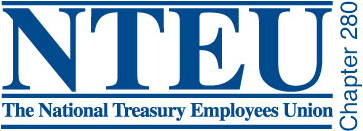On Tuesday, August 4, 2020, OGC held an all hands “Teams Live” (i.e. one-way broadcast) event where Doug Benevento attempted to justify the Agency’s latest step in its pre-bargaining implementation of its unilaterally developed plans to return employees to their offices. That step, as posted previously, includes moving both HQ and Region 1 into Phase 2 despite the fact that the most recent data do not meet CDC criteria. After telling us for almost three months that any return would be “data driven” and “science-based,” management has retreated from this assurance to a more “gut-driven” approach. Now the gating criteria and supporting data are “factors” to consider, but not a threshold that must be met before progressing. Also, Phase 3 is no longer a return to normal pre-pandemic operations, as called for by the White House guidance. Adding safety precautions to the terms of Phase 3 basically proves that Phases 1 and 2 are not sufficient to effectively cover the transition between “total lock-down” and “back to normal.”
When someone asked “Why doesn't the plan even try to prioritize functions that must be done on-site? That way, you would keep those people safer by not adding people who DON'T need to be there?,” Mr. Benevento’s response was that doing so would cause more equity concerns and complaints than the dependent-care priority, that people with those jobs would resent having to go back when telework-ready employees can stay at home. He doesn’t actually know this, though, because management did not seek input from employees or unions on the plan, and they still have not bargained with the unions about it. OMB’s directive to agencies in April clearly stated that public-facing functions and facility-dependent functions (i.e. “non-portable work”) should be prioritized for reopening first. How can it be inequitable to give people who need to work on-site a safer workplace by excluding personnel who do not need to?
There are, in fact, employees who are successfully teleworking now that would prefer to go back to their offices. Management claims that its approach is necessary to consider those employees’ needs. However, the final plan for Phase 3 would actually require people to telework part of the week(s) to allow social distancing among employees who may not want to be there. It appears that no one has considered yet asking managers to poll their employees to see who does or does not want to continue teleworking before they prepare social distancing schedules, and managers do not believe that this is within their discretion under the plan.
NTEU and the other unions representing EPA employees are communicating these concerns to management at every opportunity. We are continuing to press the agency to honor its legal obligations to bargain with us in good faith, and we will make every effort to ensure that the health and safety of all employees and their families will be protected.

